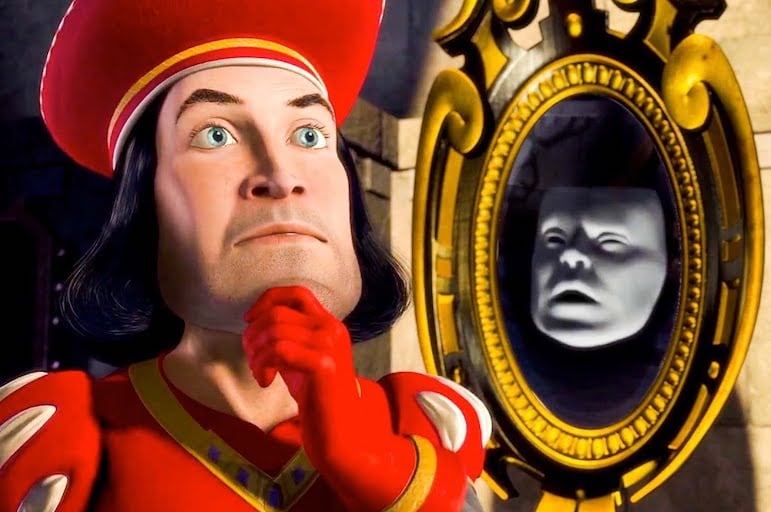The percentage of women on boards in Australia is often used as evidence that we need to do better when it comes to diversity.
For the record, that number is roughly a third. Directors from Non-Anglo-Celtic background? Just 10%.
This is clearly too low when you consider that a third of Australia’s population identifies are being Non-Anglo-Celtic.
It starts as kids
“Look, I’m Asian,” a small child said to me as she pulled the side of her eyes back with both index fingers.
“Yes, you are, because you were born that way,” I said.
“But you really shouldn’t be doing that to yours or anyone else’s eyes to reference anything of Asian origin. It’s not a nice thing to do. Please promise me you’ll never do that again.”
“Ok, I understand,” she said.
No Asian parent is going to ever teach their child to do the “squinty eyes” gesture, so the child in question likely learned it from other kids or from something they watched.

Ian Yip, co-founder and CEO of Avertro
I was told of another little girl in this child’s school from a minority background who kept refusing to play with her “friends” even though she’d done so previously. When quizzed, it was revealed that she always had to be the servant while the other two, who were from a non-minority background, played the nobility.
No one is born with pre-conditioned biases. Nature isn’t to blame here. The wrong kind of nurturing starts many down this path, and it’s much more common than society willingly admits to.
As adults, we have a duty to ensure we minimise the cultural biases we impart consciously, or more likely unconsciously, onto the children around us
“I’m not racist,” we often defensively exclaim. Maybe not. But we all have cultural biases that we picked up through the years, starting very early in life.
Cultural biases leave a mark
I’ve lost count of the number of racist, derogatory insults hurled my way through life.
My earliest memory of it was as a child when we first moved to Australia. Long after I’ve forgotten the names of all the kids who called me names and told me I was less simply for being Asian, their faces remain branded in my memories as badges of honour and resilience.
While the ugly racist aspects do not occur as often in my professional life, the biases remain mostly because of insensitivity. In one of my prior roles, a colleague upon meeting me for the first time remarked: “you must be the new tech guy.”
“No. I run the business for this region,” I said calmly.
They didn’t know what to say and instead shuffled away awkwardly.
These kinds of experiences, no matter the subtlety or intention, make their permanent mark. One has two choices: let it affect and hold you back, or use it to your advantage as motivation to make things better.
I have many acquaintances, ex-colleagues, and friends from minority backgrounds who gave up pursuing advancement in their chosen careers due to the cultural and racial biases they kept crashing into. They’d effectively decided to stop trying to make the world a better place for all of us because they were exhausted from years of trying to break through their respective cultural ceilings. The number of highly intelligent, capable people we lose from the workforce this way is a travesty.
Reality check
“Just remember, when someone has an accent, it means that (they know) one more language than you do.”
“Do you even know how smart I am in Spanish?!”
The first quote is from “Windmills of the Gods” by Sidney Sheldon. It is often paraphrased on social media as a reference to never look down on someone who speaks with an accent.
The second is from the television series “Modern Family” where Sofía Vergara’s character points out that she is often underestimated because of how she looks and sounds.
Perhaps the most tangible way to demonstrate is by using myself as an example. When people first see me, these are some common assumptions:
- I’m from somewhere in Asia, probably China and have spent most of my life there.
- I speak with a strong Asian accent.
- I speak fluent Chinese.
- English is my second language.
- I’m good at maths.
Here’s the reality:
- I’ve spent most of my life in Sydney, Australia.
- I have an Australian accent, with a slight international lilt.
- My Chinese is terrible, and I’m not proud of it.
- English is my first language and I’m pretty good at it.
- Ok, this one is true.
Impactful change
The word of the moment seems to be “diversity”, which is a good starting point. Unfortunately, most people stop there. They never take the first step towards understanding that inclusiveness is more important than proclaiming how much they value diversity.
Most of the examples referenced earlier occurred in relatively diverse contexts. Some were even inclusive. But that didn’t prevent any of the negative behaviours and outcomes from occurring.
Much of what people deem as diversity in action is a check box to ensure that the visual colour and gender wheel of life is represented around the table that we can see. A lot of what HR teams and managers present as inclusiveness in action is no more than tokenism. Letting someone that doesn’t look like you speak is not inclusiveness. Holding multicultural lunches where everyone brings dishes to represent their culture is not inclusiveness.
Nothing will change if we don’t truly understand other perspectives and lived experiences. If we don’t empathise with how others feel, and comprehend the impact cultural and racial biases have had on the people enduring it.
If you’ve never been the victim of racism, consider yourself extremely fortunate. More importantly, we must all realise that everyone plays a part in making society more inclusive and harmonious. We must stop proclaiming that “I’m not racist, so I’m definitely not part of the problem.”
The truth is, we all are. Racism doesn’t just exist in a subset of cultures. It is a universal problem that every country, race, gender, and age experiences.
We are all part of the problem because of preconditioned biases that we learned as kids, and have picked up over the years.
So, what can we do about it?
Here are a few simple steps:
- Admit you have biases. Know there might be some that make you uncomfortable.
- Uncover the assumptions you make about certain groups and make an active effort to understand why you do it.
- Write them down so they become real, which allows you to tie your behaviours to real words.
- Actively look for these behaviours in yourself and when you see it happening, force your logical brain to make the evaluation, not your feelings or instincts.
- Call others out when you see it happening. You will likely be doing them a favour.
Most importantly, we must admit our part in contributing to the problem thus far so we can actively change things for the better.
- Ian Yip is CEO of Avertro, Today is Harmony Day in Australia, know globally as End Racism Day.




















Trending
Daily startup news and insights, delivered to your inbox.